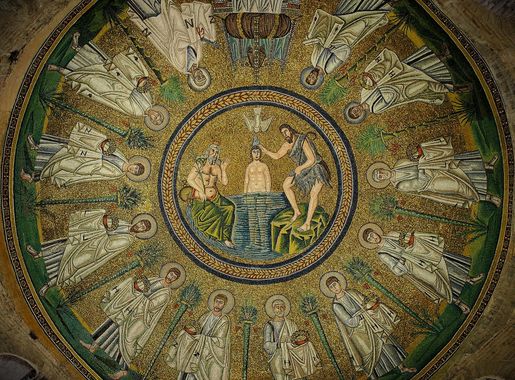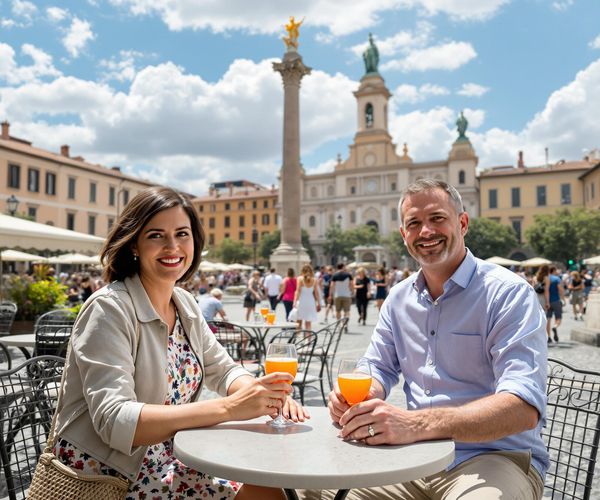
Ravenna: The Mosaic Gem of Italy
Discover Ravenna, Italy's mosaic marvel, where Byzantine splendor, rich history, and coastal beauty come together to create an unforgettable travel experience.
Ravenna, a city in Italy's Emilia-Romagna region, is a treasure trove of art, history, and culture. Known for its stunning Byzantine mosaics, Ravenna is home to eight UNESCO World Heritage Sites. These ancient mosaics, dating back to the 5th and 6th centuries, can be found in various churches and buildings, showcasing intricate designs and vibrant colors that captivate visitors from around the world. Beyond its mosaics, Ravenna offers a rich historical experience. Once the capital of the Western Roman Empire, the city has a plethora of historical sites, including the Mausoleum of Galla Placidia and the Basilica di San Vitale. The city's charming streets are lined with picturesque cafes, quaint shops, and inviting restaurants, perfect for leisurely strolls and sampling local cuisine. Ravenna also boasts a beautiful coastline along the Adriatic Sea. The nearby beaches provide a perfect escape for sunbathing and swimming. Nature lovers will appreciate the Po Delta Regional Park, where they can explore diverse wildlife and serene landscapes. With its blend of art, history, and natural beauty, Ravenna is a must-visit destination for any traveler exploring Italy.
Local tips in Ravenna
- Plan your visit to the Basilica di San Vitale early in the morning to avoid crowds and get the best views of the mosaics.
- Purchase a combined ticket for the UNESCO sites to save money and time.
- Try the local piadina, a traditional flatbread sandwich, at one of the city's many street food stalls.
- Rent a bike to explore the city and nearby coastal areas at your own pace.
- Check the schedule for local festivals and events, such as the Ravenna Festival, to enhance your visit.
Ravenna: The Mosaic Gem of Italy
Ravenna, a city in Italy's Emilia-Romagna region, is a treasure trove of art, history, and culture. Known for its stunning Byzantine mosaics, Ravenna is home to eight UNESCO World Heritage Sites. These ancient mosaics, dating back to the 5th and 6th centuries, can be found in various churches and buildings, showcasing intricate designs and vibrant colors that captivate visitors from around the world. Beyond its mosaics, Ravenna offers a rich historical experience. Once the capital of the Western Roman Empire, the city has a plethora of historical sites, including the Mausoleum of Galla Placidia and the Basilica di San Vitale. The city's charming streets are lined with picturesque cafes, quaint shops, and inviting restaurants, perfect for leisurely strolls and sampling local cuisine. Ravenna also boasts a beautiful coastline along the Adriatic Sea. The nearby beaches provide a perfect escape for sunbathing and swimming. Nature lovers will appreciate the Po Delta Regional Park, where they can explore diverse wildlife and serene landscapes. With its blend of art, history, and natural beauty, Ravenna is a must-visit destination for any traveler exploring Italy.
When is the best time to go to Ravenna?
Iconic landmarks you can’t miss
Dante's Tomb
Explore Dante's Tomb in Ravenna: a serene historical landmark honoring the legacy of Italy's literary genius amidst stunning gardens and rich cultural heritage.
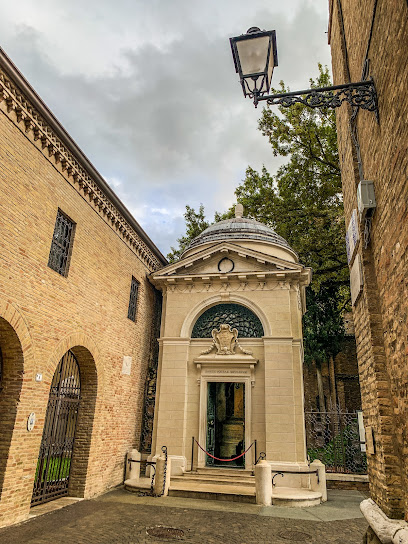
Fontanella Piazza del Popolo
Experience the vibrant atmosphere and rich history of Fontanella Piazza del Popolo, a must-visit landmark in Ravenna, Italy.
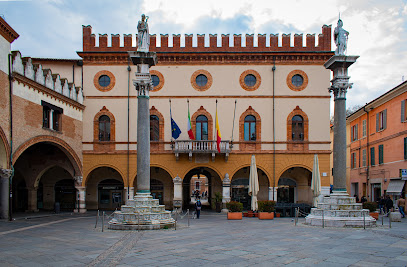
Basilica di Sant'Apollinare Nuovo
Discover the stunning mosaics and rich history of the Basilica di Sant'Apollinare Nuovo, a must-visit UNESCO site in Ravenna, Italy.

Basilica di Sant'Apollinare in Classe
Discover the breathtaking mosaics and serene beauty of the Basilica di Sant'Apollinare in Classe, a must-see UNESCO World Heritage site in Ravenna.
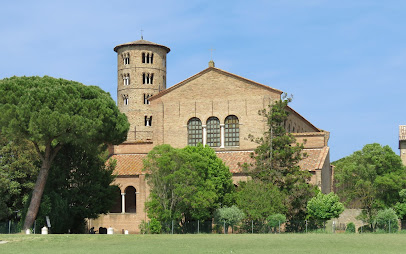
Basilica of San Vitale
Explore the breathtaking mosaics and rich history of the Basilica of San Vitale, a UNESCO World Heritage site in the heart of Ravenna, Italy.
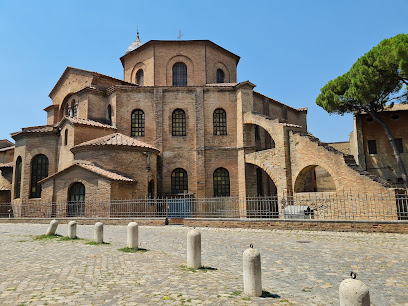
Mausoleo di Galla Placidia
Discover the breathtaking mosaics and historical significance of the Mausoleo di Galla Placidia, a must-visit gem in Ravenna, Italy.
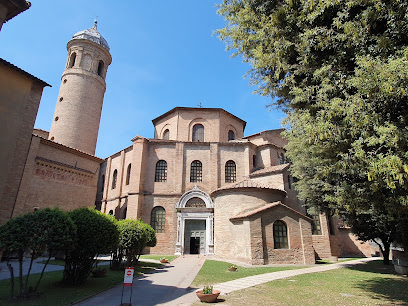
Mausoleum of Theodoric
Explore the architectural beauty and historical significance of the Mausoleum of Theodoric, a Gothic landmark in Ravenna, Italy.
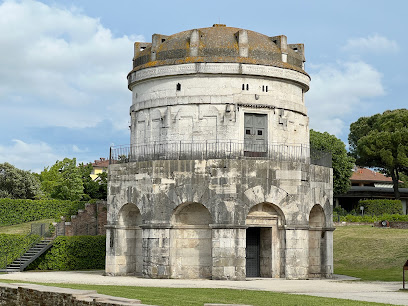
Rocca Brancaleone
Explore the lush gardens and historical charm of Rocca Brancaleone, a serene park in the heart of Ravenna, Italy, perfect for relaxation and nature walks.
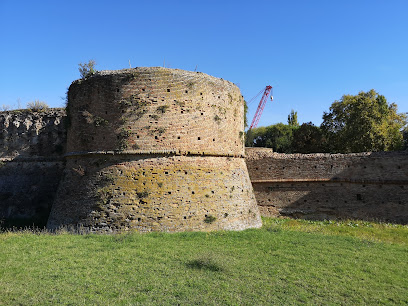
Battistero Neoniano (o degli Ortodossi)
Explore the Battistero Neoniano, a historical gem in Ravenna, adorned with magnificent mosaics that tell the story of early Christian art and culture.
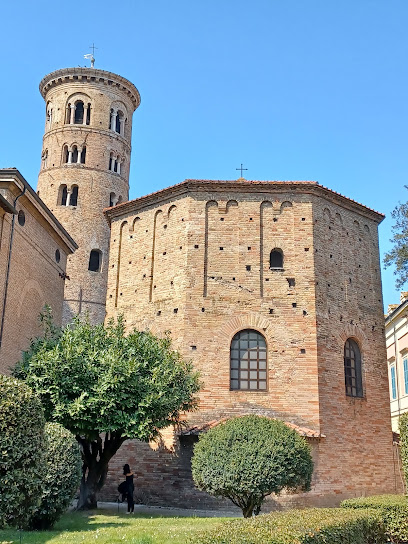
Archiepiscopal Museum, Ravenna
Explore the Archiepiscopal Museum in Ravenna, a historical gem featuring stunning mosaics and artifacts that narrate the city's rich ecclesiastical heritage.
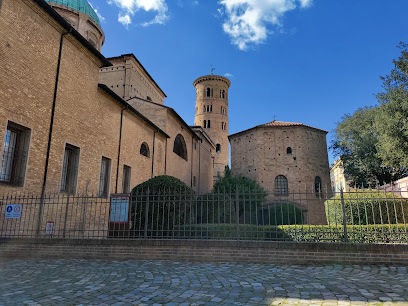
Chiesa di Sant'Eufemia-Domus dei Tappeti di Pietra
Explore Ravenna's artistic heritage at Chiesa di Sant'Eufemia and the Domus dei Tappeti di Pietra, a captivating museum showcasing stunning mosaics.
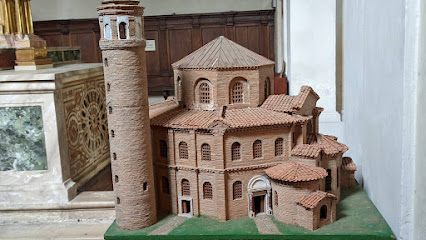
Battistero degli Ariani
Experience the breathtaking mosaics and serene architecture of the Battistero degli Ariani, a hidden gem in Ravenna's rich cultural landscape.
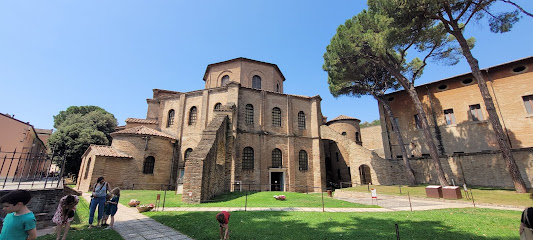
Ravenna Art Museum
Discover Ravenna Art Museum, a cultural gem showcasing contemporary art and exquisite mosaics in the heart of Ravenna, Italy.
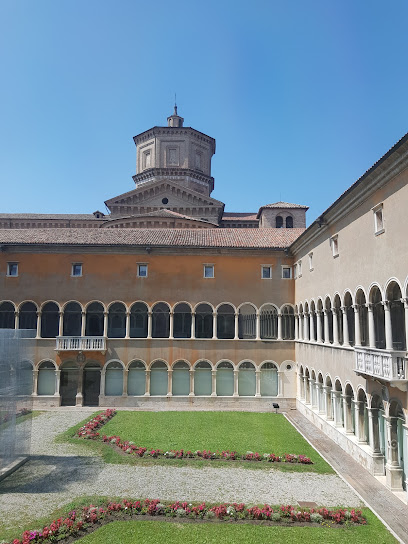
Basilica of Saint Francis
Explore the Basilica of Saint Francis in Ravenna, a stunning historical landmark filled with exquisite art and spiritual serenity.
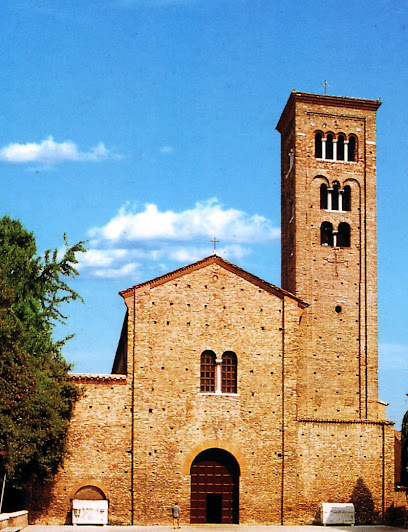
Porta Adriana
Explore Porta Adriana, a historical landmark in Ravenna, Italy, where ancient architecture meets vibrant culture and rich heritage.
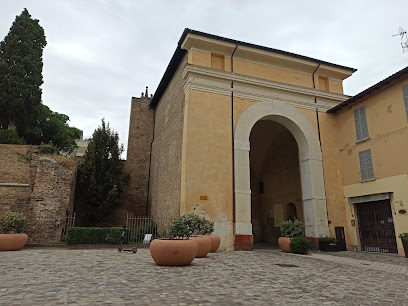
Unmissable attractions to see
Mirabilandia
Experience the ultimate thrill at Mirabilandia, Italy's premier amusement park featuring rides, shows, and fun for the whole family.
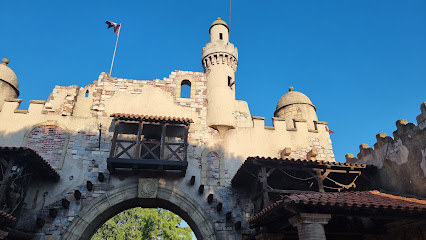
Dante's Tomb
Explore the serene Dante's Tomb in Ravenna, a historical landmark honoring the legacy of Italy's greatest poet amidst beautiful gardens.
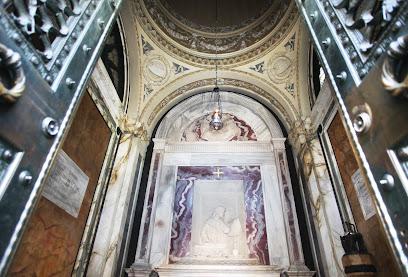
Fontanella Piazza del Popolo
Experience the vibrant heart of Ravenna at Fontanella Piazza del Popolo, a historical landmark rich in culture, architecture, and local charm.
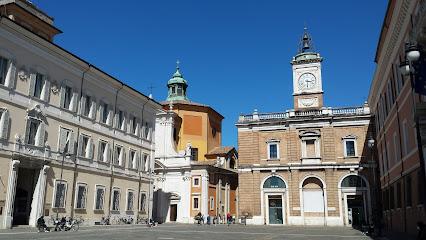
Basilica di Sant'Apollinare Nuovo
Explore the breathtaking mosaics and serene atmosphere of Basilica di Sant'Apollinare Nuovo, a must-visit historical landmark in Ravenna, Italy.

Basilica of San Vitale
Explore the Basilica of San Vitale, a UNESCO World Heritage site in Ravenna, celebrated for its exquisite Byzantine mosaics and rich history.
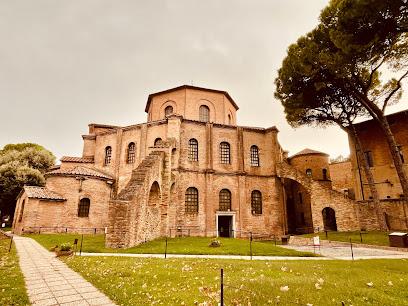
Basilica di Sant'Apollinare in Classe
Discover the artistic grandeur of the Basilica di Sant'Apollinare in Classe, a UNESCO World Heritage site with breathtaking mosaics in Ravenna, Italy.

Mausoleo di Galla Placidia
Explore the Mausoleo di Galla Placidia, Ravenna's exquisite 5th-century mausoleum adorned with stunning mosaics and rich historical significance.
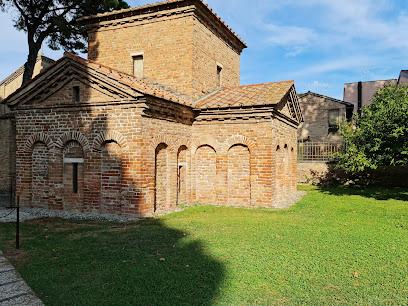
Safari Ravenna
Discover Safari Ravenna, an enchanting wildlife refuge in Italy, where diverse animal species await in a naturalistic and educational setting.

Piazza del Popolo
Discover the charm of Piazza del Popolo in Cesena, a vibrant square filled with history, culture, and delightful local cuisine.
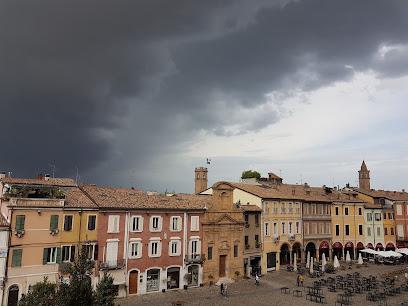
Pomposa Abbey
Explore the serene Pomposa Abbey in Codigoro, a historical landmark featuring stunning architecture, rich heritage, and tranquil gardens.

Battistero Neoniano (o degli Ortodossi)
Explore the Battistero Neoniano, an ancient baptistery adorned with stunning mosaics, reflecting Ravenna's rich cultural and historical heritage.
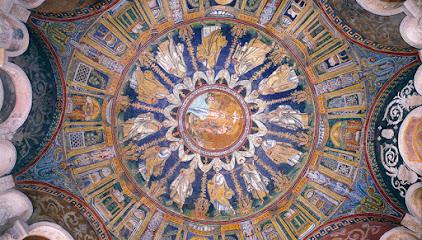
Archiepiscopal Museum, Ravenna
Explore the Archiepiscopal Museum in Ravenna, a treasure trove of Byzantine art and ecclesiastical history that captivates every visitor.
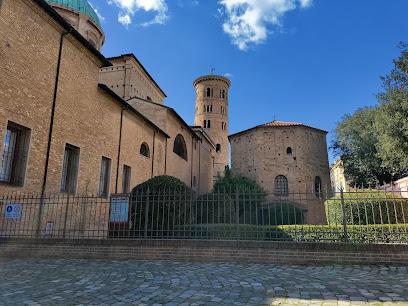
Rocca Brancaleone
Discover the tranquil beauty of Rocca Brancaleone, a historic community garden and park in Ravenna, perfect for relaxation and exploration.
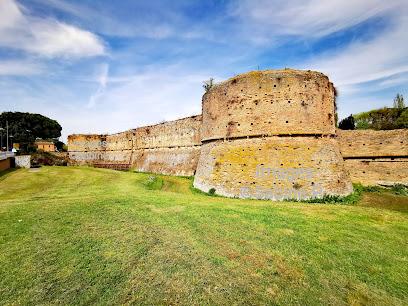
Rocca Brancaleone
Experience the beauty and history of Rocca Brancaleone, a serene community garden and medieval fortress in Ravenna, Italy, perfect for families and nature lovers.
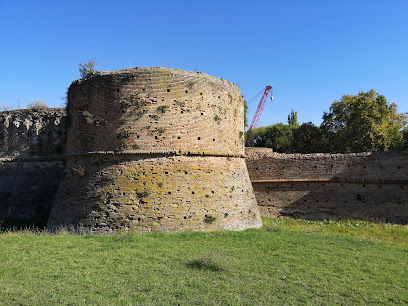
Chiesa di Sant'Eufemia-Domus dei Tappeti di Pietra
Explore the breathtaking mosaics and ancient stone carpets at Chiesa di Sant'Eufemia, a must-visit museum in Ravenna's rich cultural landscape.
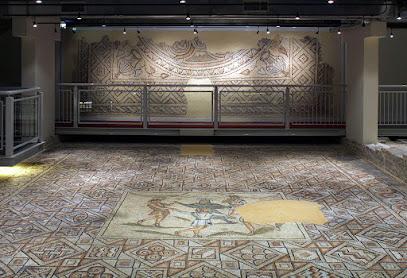
Essential places to dine
Ca' de Vèn
Discover authentic Italian flavors at Ca' de Vèn in Ravenna - where every meal is a celebration of culinary tradition.
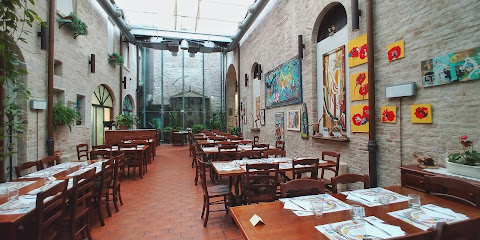
Osteria Passatelli
Discover authentic Italian cuisine at Osteria Passatelli in Ravenna - home to delicious homemade pasta and regional specialties.
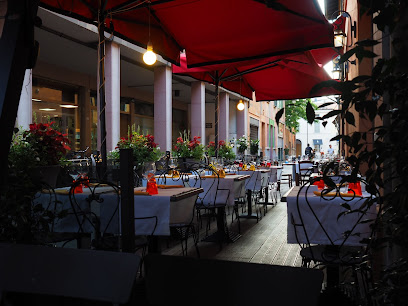
Darsenale - Bizantina Brewpub
Discover Darsenale - Bizantina Brewpub: A vibrant gastropub in Ravenna serving artisanal pizzas and craft beers amidst a lively atmosphere.
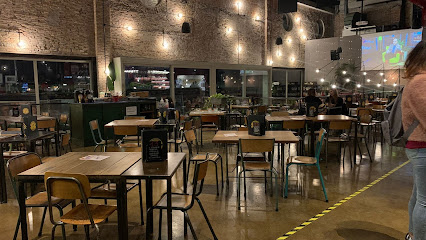
Mercato Coperto
Experience the essence of Italian cuisine at Mercato Coperto – Ravenna's vibrant market for fresh produce and authentic flavors.
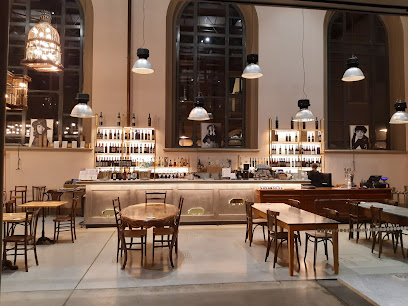
Lowenhaus
Discover the vibrant dining experience at Lowenhaus in Ravenna - where local flavors meet an exciting nightlife ambiance.
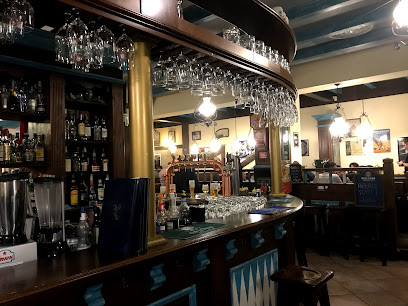
La Piadina del Melarancio
Experience authentic Italian flavors at La Piadina del Melarancio in Ravenna – where every piadina tells a story.

La Gardèla
Discover authentic Italian cuisine at La Gardèla in Ravenna—where every dish tells a story of tradition and flavor.
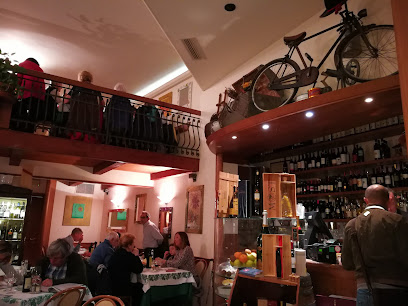
Trattoria La Rustica
Discover authentic Italian flavors at Trattoria La Rustica in Ravenna - where tradition meets taste in a cozy setting.
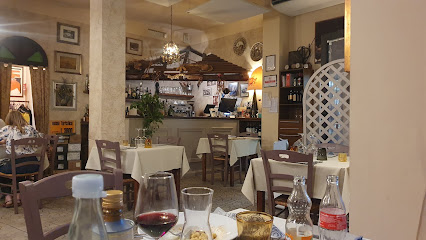
Il Portolano Trattoria di Pesce – Ristorante di pesce a Ravenna
Experience authentic Italian seafood at Il Portolano Trattoria in Ravenna—where freshness meets tradition in every bite.
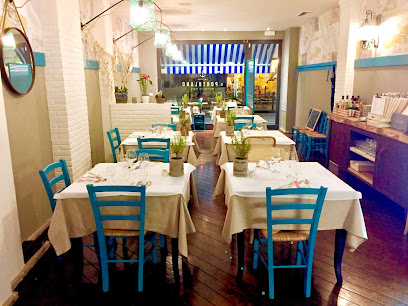
Ristorante Al 45
Savor authentic Italian flavors at Ristorante Al 45 in Ravenna – where every meal is a celebration of culinary tradition.
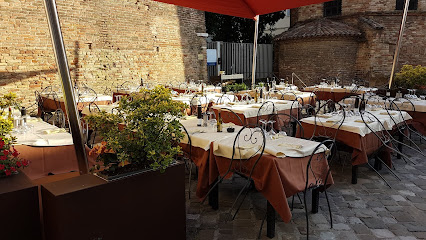
Babaleus - Ristorante Pizzeria
Savor authentic Italian pizza and traditional dishes at Babaleus - Ristorante Pizzeria in beautiful Ravenna.

Trattoria Al Cerchio
Experience authentic Italian cuisine at Trattoria Al Cerchio in Ravenna - where tradition meets taste in every delightful dish.

Osteria dei Battibecchi
Experience authentic Italian cuisine at Osteria dei Battibecchi in Ravenna - where tradition meets flavor in every dish.
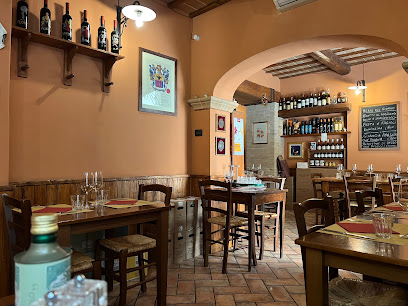
S Club
Experience soulful dining at S Club in Ravenna—where exquisite soul food meets electrifying live music for an unforgettable evening.
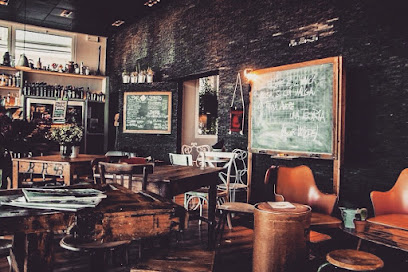
I Furfanti
Indulge in authentic Italian cuisine at I Furfanti, where delicious pizzas and traditional dishes await you in charming Ravenna.
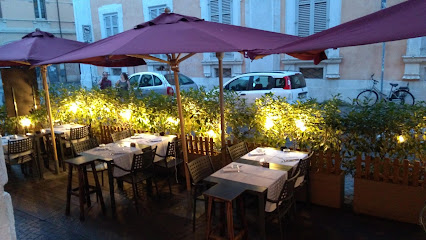
Markets, malls and hidden boutiques
Centro Commerciale Esp
Centro Commerciale Esp in Ravenna offers a diverse shopping experience with a variety of stores, dining options, and a large supermarket, perfect for every traveler.
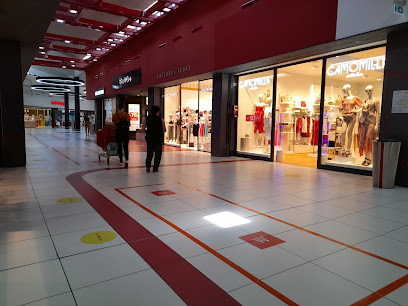
Flying Tiger Copenhagen
Explore the whimsical world of Flying Tiger Copenhagen in Ravenna, where unique gifts and creative finds await every visitor.
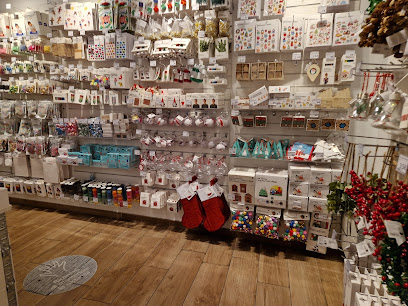
Centro Commerciale Gallery
Explore Centro Commerciale Gallery in Ravenna for a unique shopping experience with local flavors and international brands.
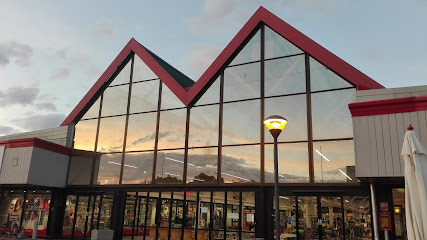
SCOUT
Explore SCOUT in Ravenna for the latest in Italian fashion, offering unique styles and accessories that capture the essence of contemporary design.

Topazio Ravenna
Discover unique gifts and local crafts at Topazio Ravenna, where every item is a piece of the city's vibrant culture.
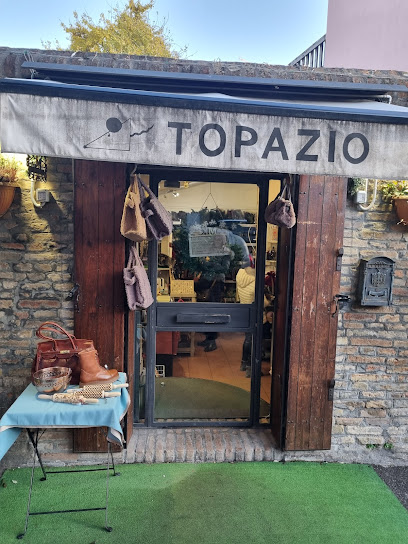
COINCASA
Explore COINCASA in Ravenna for unique gifts, stylish furniture, and elegant lighting that capture the spirit of Italian design.
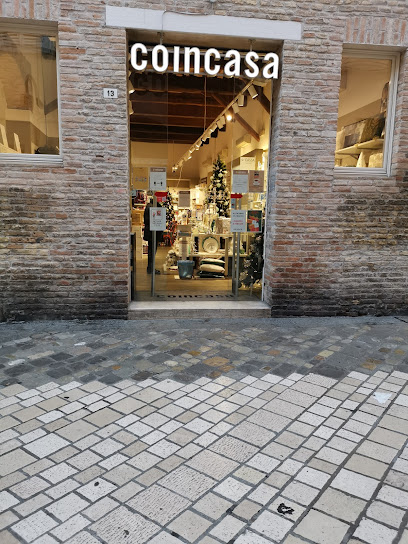
TAGIURI - Abbigliamento Uomo e Donna
Explore TAGIURI in Ravenna for a captivating selection of men's and women's clothing reflecting the latest Italian fashion trends.
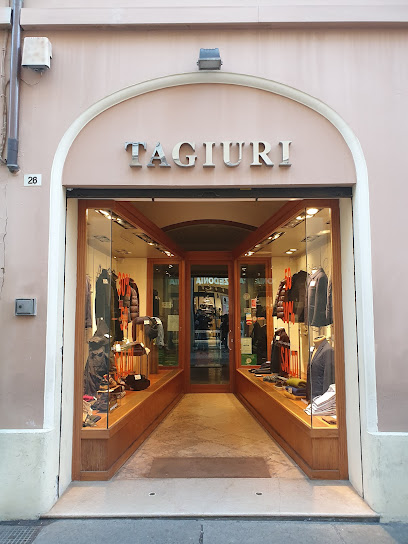
Falconeri
Discover the elegance of Italian fashion at Falconeri in Ravenna, where quality meets style for men and women.
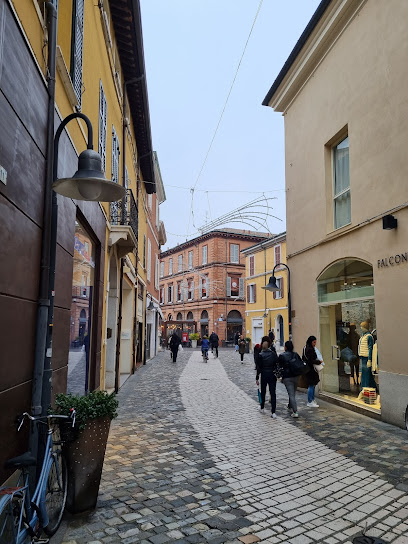
CASA Ravenna
Discover CASA Ravenna, a unique shopping experience in MAR Shopping, offering a variety of home goods, furniture, and gifts to enrich your life.
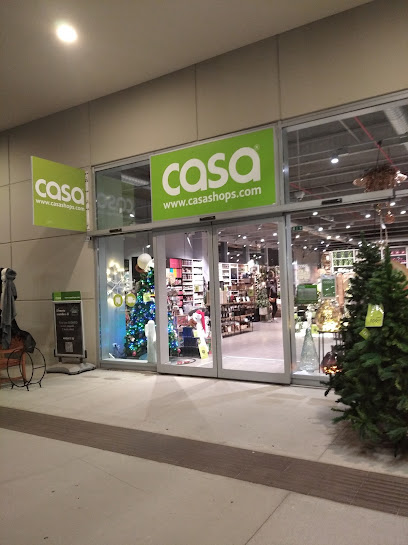
ALE-HOP
Explore ALE-HOP in Ravenna for a delightful selection of unique gifts and souvenirs that capture the spirit of this historic city.
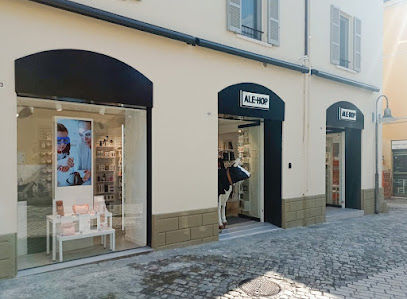
I Monili Ravenna
Explore I Monili Ravenna for exquisite costume jewelry and fashion accessories, reflecting the vibrant spirit of Ravenna, Italy.
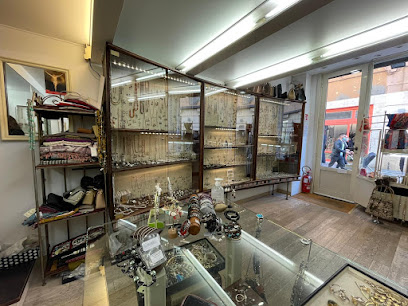
Jade Store Ravenna
Explore the stylish offerings of Jade Store Ravenna, where fashion meets elegance in a cozy boutique setting.
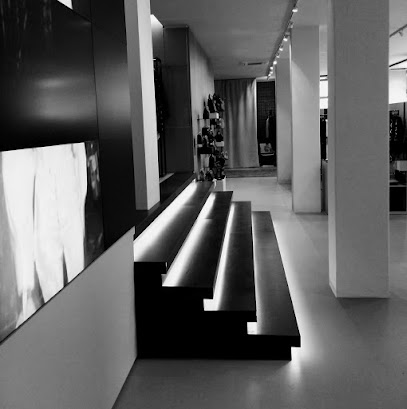
Fango Store
Explore Fango Store in Ravenna for stylish clothing and unique fashion accessories that capture the essence of Italian fashion.

Spezia Passion Corner
Discover exquisite local wines and handcrafted candles at Spezia Passion Corner, an enchanting store in the heart of Ravenna, Italy.
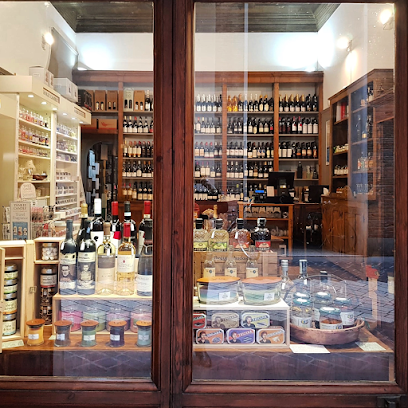
Ravenna Vintage
Explore the charm of Ravenna Vintage, your go-to destination for unique used clothing and sustainable fashion in the heart of Ravenna.
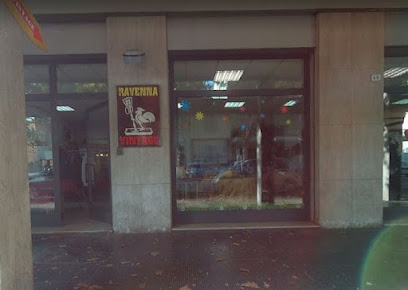
Essential bars & hidden hideouts
Darsenale - Bizantina Brewpub
Experience the rich flavors of Italy at Darsenale, Ravenna's premier gastropub offering artisanal pizzas and an extensive craft beer selection.
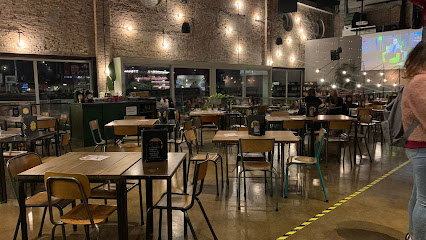
Fresco
Discover Fresco in Ravenna: Experience the joy of sharing exquisite tapas and vibrant drinks in a cozy, lively atmosphere.
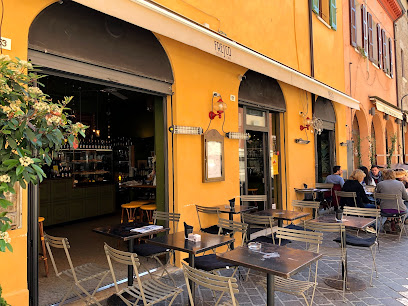
S Club
Experience the soul of Ravenna at S Club, where delicious soul food meets electrifying live music in a vibrant atmosphere.
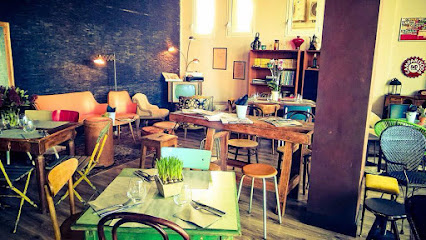
Downtown Pub
Downtown Pub: A lively Ravenna hotspot for delicious burgers, local beers, and unforgettable nightlife experiences.
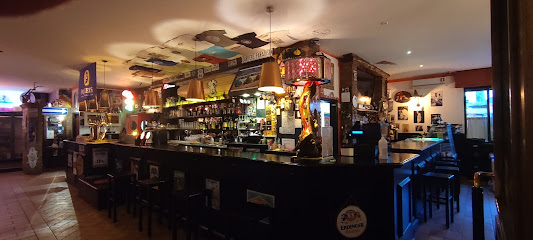
Bollicine Wine Bar
Discover Bollicine Wine Bar in Ravenna: A cozy haven for wine lovers with a diverse selection and delicious small plates, perfect for any occasion.

Cascador
Discover the relaxing ambiance and delightful drinks at Cascador, a must-visit bar in Ravenna for every traveler.
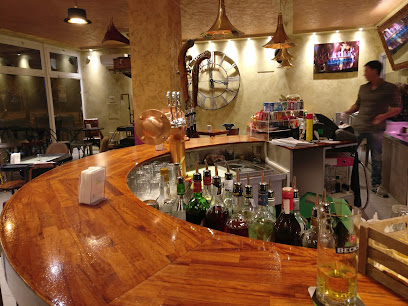
Mac Gowan Pub
Discover the vibrant Mac Gowan Pub in Ravenna, where lively nightlife meets delightful local flavors in a cozy atmosphere.
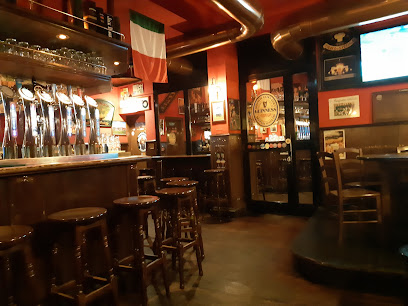
Enoteca Bastione
Discover Enoteca Bastione in Ravenna: A vibrant beer hall and gastropub offering an array of craft beers and delicious culinary delights.
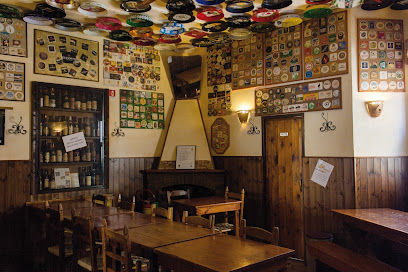
Fargo
Experience the vibrant nightlife of Ravenna at Fargo, a cocktail bar where creativity and local charm meet in a lively atmosphere.
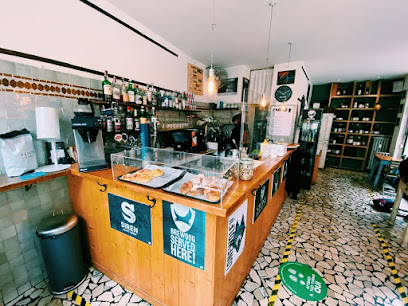
Heaven Pub Ravenna
Experience the vibrant nightlife of Ravenna at Heaven Pub, where exquisite cocktails and delicious meals come together in a lively atmosphere.

Cabiria Wine Bar
Experience the perfect blend of fine wines, exquisite cuisine, and a warm atmosphere at Cabiria Wine Bar in Ravenna, Italy.
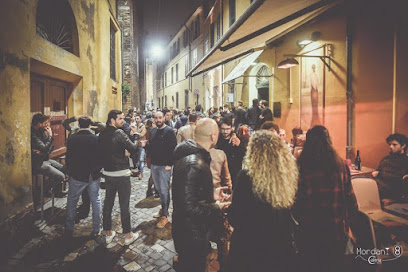
Zero4 Il Pub in Centro
Experience the vibrant nightlife at Zero4 Il Pub in Ravenna, where delicious food, refreshing drinks, and a welcoming atmosphere await every visitor.

Granditalia Ristorante Pasticceria Cocktailleria
Discover authentic Italian flavors at Granditalia Ristorante Pasticceria Cocktailleria in Ravenna, a perfect blend of cuisine, ambiance, and hospitality.
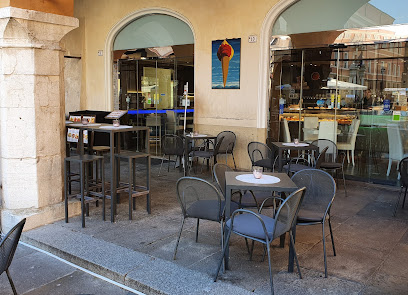
Bar Pionia
Experience the vibrant nightlife of Ravenna at Bar Pionia, where expertly crafted cocktails meet a cozy, inviting atmosphere for a perfect evening out.
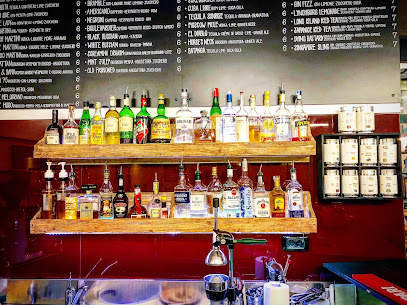
Al solito posto
Discover the charm of Ravenna at Al Solito Posto, a cozy bar offering a delightful selection of drinks and a warm atmosphere.
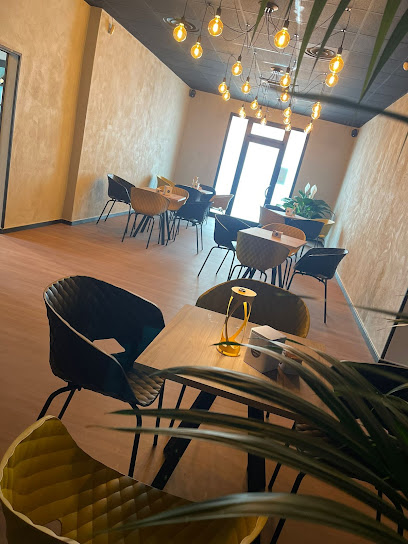
Travel experiences inspired by this city
Explore more travel diariesLocal Phrases
-
- HelloCiao
[chow] - GoodbyeArrivederci
[ah-ree-veh-dehr-chee] - YesSì
[see] - NoNo
[noh] - Please/You're welcomePer favore/Prego
[pehr fah-voh-reh/preh-goh] - Thank youGrazie
[grah-tsyeh] - Excuse me/SorryMi scusi/Scusa
[mee skoo-zee/skoo-sah] - How are you?Come stai?
[koh-meh sty] - Fine. And you?Bene. E tu?
[beh-neh. eh too] - Do you speak English?Parli inglese?
[pahr-lee een-gleh-zeh] - I don't understandNon capisco
[nohn kah-pee-skoh]
- HelloCiao
-
- I'd like to see the menu, pleaseVorrei vedere il menu, per favore
[vohr-eh-ee veh-deh-reh eel meh-noo, pehr fah-voh-reh] - I don't eat meatNon mangio carne
[nohn mahn-joh kahr-neh] - Cheers!Salute!
[sah-loo-teh] - I would like to pay, pleaseVorrei pagare, per favore
[vohr-eh-ee pah-gah-reh, pehr fah-voh-reh]
- I'd like to see the menu, pleaseVorrei vedere il menu, per favore
-
- Help!Aiuto!
[ah-yoo-toh] - Go away!Vai via!
[vah-ee vyah] - Call the Police!Chiama la polizia!
[kyah-mah lah poh-lee-tsya] - Call a doctor!Chiama un dottore!
[kyah-mah oon doh-toh-reh] - I'm lostMi sono perso
[mee soh-no pehr-soh] - I'm illSono malato
[soh-no mah-lah-toh]
- Help!Aiuto!
-
- I'd like to buy...Vorrei comprare...
[vohr-eh-ee kohm-prah-reh] - I'm just lookingSto solo guardando
[stoh soh-loh gwahr-dahn-doh] - How much is it?Quanto costa?
[kwahn-toh koh-stah] - That's too expensiveÈ troppo caro
[eh troh-poh kah-roh] - Can you lower the price?Puoi abbassare il prezzo?
[pwah-ee ahb-bahs-sah-reh eel preh-tsoh]
- I'd like to buy...Vorrei comprare...
-
- What time is it?Che ora è?
[keh oh-rah eh] - It's one o'clockÈ l'una
[eh loo-nah] - Half past (10)Le dieci e mezza
[leh dyeh-chee eh meht-sah] - MorningMattina
[maht-tee-nah] - AfternoonPomeriggio
[poh-meh-ree-joh] - EveningSera
[seh-rah] - YesterdayIeri
[yeh-ree] - TodayOggi
[oh-jee] - TomorrowDomani
[doh-mah-nee] - 1Uno
[oo-no] - 2Due
[doo-eh] - 3Tre
[treh] - 4Quattro
[kwah-troh] - 5Cinque
[cheen-kweh] - 6Sei
[seh-ee] - 7Sette
[seht-teh] - 8Otto
[oh-ttoh] - 9Nove
[noh-veh] - 10Dieci
[dyeh-chee]
- What time is it?Che ora è?
-
- Where's a/the...?Dov'è...?
[doh-veh] - What's the address?Qual è l'indirizzo?
[kwahl eh leen-dee-reet-soh] - Can you show me (on the map)?Puoi mostrarmi (sulla mappa)?
[pwah-ee mohs-trar-mee (sool-lah mahp-pah)] - When's the next (bus)?Quando passa il prossimo (autobus)?
[kwahn-doh pahs-sah eel prohs-see-moh (ow-toh-boos)] - A ticket (to ....)Un biglietto (per ....)
[oon bee-lyet-toh (pehr)]
- Where's a/the...?Dov'è...?
History of Ravenna
-
Ravenna was originally established as a settlement by the Umbrians and later became a part of the Roman Republic around the 2nd century BCE. Its strategic location near the Adriatic Sea made it an important naval base for the Roman fleet. Under Emperor Augustus, Ravenna saw considerable development, transforming into a bustling port city connected to the Mediterranean world.
-
In 402 CE, Emperor Honorius moved the capital of the Western Roman Empire from Milan to Ravenna. This decision was driven by Ravenna’s defensible position amidst swamps and its proximity to the Adriatic Sea, which provided an easy escape route. As the capital, Ravenna became a political and military hub, attracting scholars, artists, and craftsmen.
-
After the fall of the Western Roman Empire, Ravenna was captured by the Ostrogoths under King Theodoric the Great in 493 CE. Theodoric made Ravenna the capital of his kingdom, blending Roman and Gothic cultures. This period was marked by significant architectural achievements, including the construction of the Mausoleum of Theodoric and the Arian Baptistery.
-
In 540 CE, Ravenna was reconquered by the Byzantine Empire under General Belisarius during the Gothic War. It became the seat of the Exarchate of Ravenna, a Byzantine administrative region. The city's most iconic monuments, such as the Basilica of San Vitale and the Basilica of Sant'Apollinare in Classe, were constructed during this period, showcasing exceptional Byzantine mosaics.
-
Following the Lombard invasion in the 8th century, Ravenna’s political significance waned, but it remained an important religious center. The city fell under the control of the Papal States in the 8th century and experienced periods of autonomy and external influence. The Archbishops of Ravenna continued to commission religious art and architecture, maintaining the city's cultural heritage.
-
During the Renaissance, Ravenna saw a resurgence in artistic and architectural endeavors, although it never regained its former political might. The city became known for its beautiful mosaics and historical sites. In the 19th century, efforts to preserve and restore Ravenna’s ancient monuments gained momentum, cementing its status as a center of historical and cultural significance.
Ravenna Essentials
-
Ravenna is located in the Emilia-Romagna region of Italy. The nearest international airports are Bologna Guglielmo Marconi Airport (about 85 kilometers away) and Venice Marco Polo Airport (about 144 kilometers away). From Bologna, you can take a direct train to Ravenna, which takes approximately 1.5 hours. Alternatively, you can rent a car and drive to Ravenna. If arriving from Venice, you can take a train to Ravenna with a transfer at Bologna, which typically takes around 2.5 to 3 hours. There are also bus services available from various cities in Italy.
-
Ravenna has a well-developed public transport system, including buses and taxis. The city is relatively small, so many attractions are within walking distance. For those who prefer cycling, bike rentals are available, and the city has bike-friendly paths. If you plan to explore the surrounding areas, renting a car is a convenient option. There are also local trains that connect Ravenna to nearby towns and cities.
-
The official currency in Italy is the Euro (EUR). Credit and debit cards are widely accepted in hotels, restaurants, and shops. However, it is advisable to carry some cash, especially when visiting smaller establishments or markets. ATMs are readily available throughout Ravenna, allowing you to withdraw cash as needed.
-
Ravenna is generally a safe destination for tourists. However, as with any travel destination, it is important to take standard precautions. Avoid walking alone at night in poorly lit or unfamiliar areas. Keep an eye on your belongings in crowded places, such as markets and public transport. While Ravenna does not have specific high-crime areas targeting tourists, it is always best to stay vigilant and aware of your surroundings.
-
In case of emergency, dial 112 for immediate assistance. Ravenna has local police stations and medical facilities that can provide help. It is recommended to have travel insurance that covers medical emergencies. For minor health issues, there are pharmacies throughout the city where you can purchase over-the-counter medications.
-
Fashion: Do dress modestly, especially when visiting religious sites. Avoid wearing revealing clothing. Religion: Do respect local customs and traditions. Always cover your shoulders and knees when entering churches. Public Transport: Do be respectful and give up your seat to elderly passengers. Don't eat or drink on public transport. Greetings: Do greet people with a casual 'Ciao' or 'Buongiorno'. A handshake is also common. Eating & Drinking: Do try local delicacies and accept food offerings graciously. Don't refuse hospitality, as it is considered impolite.
-
To experience Ravenna like a local, visit the local markets, such as Mercato Coperto, where you can buy fresh produce and traditional goods. Engage with locals, who are often friendly and willing to share stories about the city's history and culture. Don't miss visiting the city's UNESCO World Heritage Sites, including the Basilica of San Vitale and the Mausoleum of Galla Placidia. For a unique experience, take a stroll along the charming streets of the historic center and enjoy a coffee at one of the local cafes.
Trending Landmark in Ravenna
-
Dante's Tomb
-
Fontanella Piazza del Popolo
-
Basilica di Sant'Apollinare Nuovo
-
Basilica di Sant'Apollinare in Classe
-
Basilica of San Vitale
-
Mausoleo di Galla Placidia
-
Mausoleum of Theodoric
-
Rocca Brancaleone
-
Battistero Neoniano (o degli Ortodossi)
-
Archiepiscopal Museum, Ravenna
-
Chiesa di Sant'Eufemia-Domus dei Tappeti di Pietra
-
Battistero degli Ariani
-
Ravenna Art Museum
-
Basilica of Saint Francis
-
Porta Adriana
Nearby Cities to Ravenna
-
Things To Do in Rimini
-
Things To Do in Serravalle
-
Things To Do in Borgo Maggiore
-
Things To Do in Acquaviva
-
Things To Do in Domagnano
-
Things To Do in San Marino
-
Things To Do in Faetano
-
Things To Do in Chiesanuova
-
Things To Do in Fiorentino
-
Things To Do in Montegiardino
-
Things To Do in Bologna
-
Things To Do in Urbino
-
Things To Do in Florence
-
Things To Do in Modena
-
Things To Do in Arezzo





